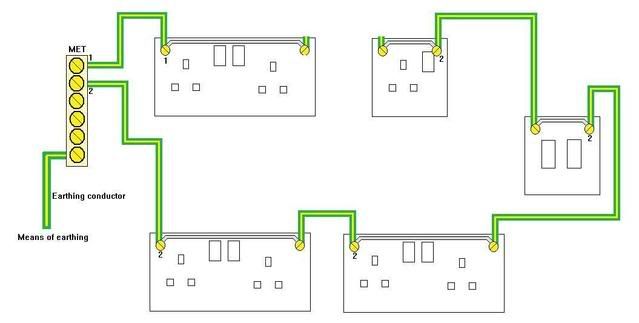Only if you believe that you could completely remove all of independent protective conductor #1 and be left with a normally compliant independent protective conductor #2.A protective conductor can link an exposed conductive part to the MET, theres two independant links from each point to the MET.
Is it fair to say there are two independant protective conductors from each point to the MET?
If you can't remove one to leave one then you didn't have two in the first place...


